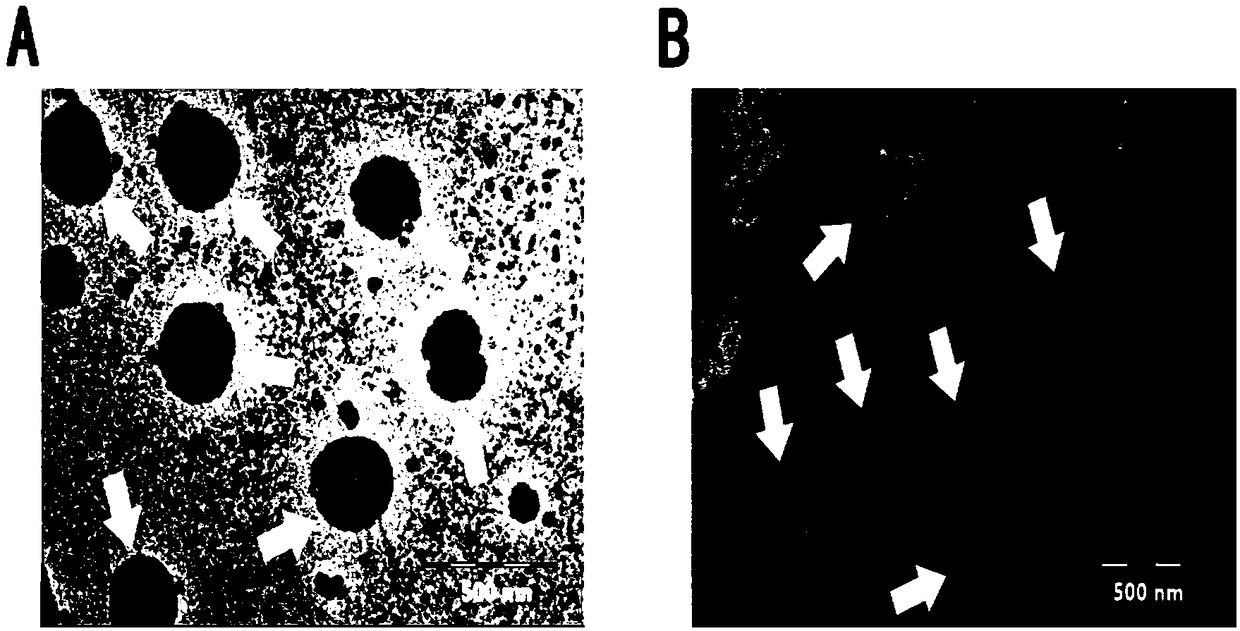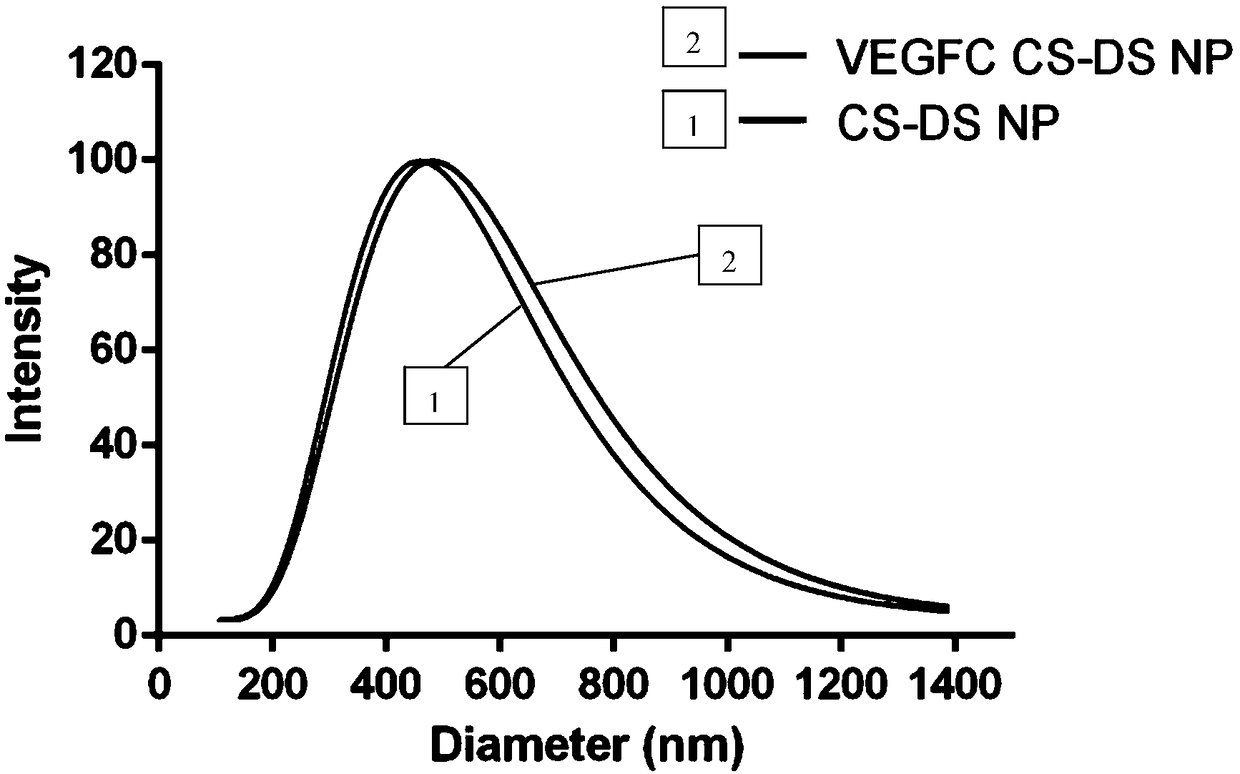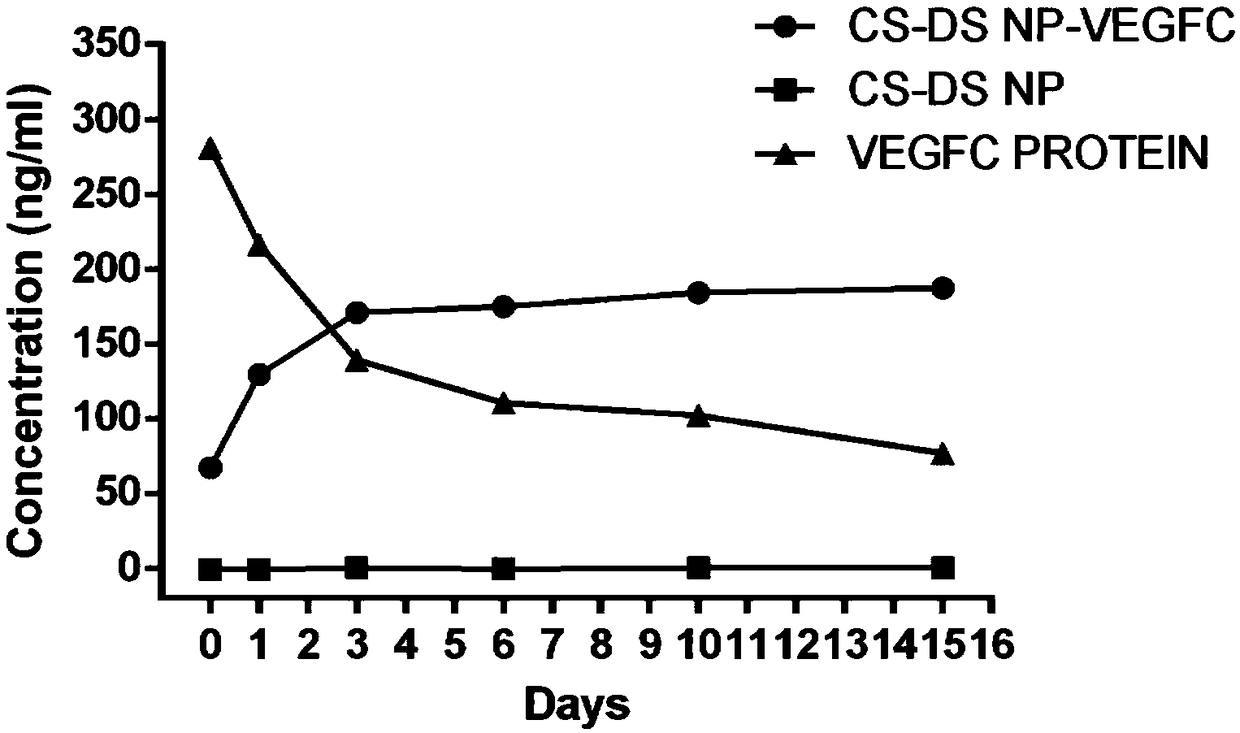VEGFc (vascular endothelial growth factor) protein slow-release nano-particle for improving spermatogenesis and application of nano-particle
A nanoparticle and spermatogenesis technology, applied in the field of medicine, can solve problems such as damage to efferent tubules and seminiferous tubules, short half-life, reduced treatment effect, etc., and achieve the effects of improving spermatogenesis, good uniformity, and good application prospects.
- Summary
- Abstract
- Description
- Claims
- Application Information
AI Technical Summary
Problems solved by technology
Method used
Image
Examples
Embodiment 1
[0050] Example 1 Preparation of VEGFc protein slow-release nanoparticles for improving spermatogenesis (1)
[0051] 1. Experimental equipment and raw material reagents
[0052] Experimental equipment: centrifuge, oscillator, pipette gun, EP tube, centrifuge tube, 0.4um grade filter, 10KMWCO dialysis box, freeze dryer.
[0053] Raw material reagents: human recombinant VEGFc protein, phosphate buffer, 500kDa dextran sulfate, 15kDa high degree of deacetylation chitosan, acetic acid, sodium acetate, zinc sulfate, fetal calf serum, mannitol, double distilled water.
[0054] 2. Preparation method
[0055] The preparation method is as follows:
[0056] DAY1: (1) Dissolve 20ug of human recombinant VEGFc protein powder in 50mM phosphate buffer with pH=7 and ensure that the final concentration of VEGFC factor is 1mg / ml;
[0057] (2) Put the solution obtained in step 1 into a dialysis box of 10KMWCO and dialyze overnight, and the dialysate uses phosphate buffer;
[0058] DAY2: (3) M...
Embodiment 2
[0064] Example 2 Preparation of VEGFc protein slow-release nanoparticles for improving spermatogenesis (two)
[0065] 1. Experimental equipment and raw material reagents
[0066] Experimental equipment: centrifuge, oscillator, pipette gun, EP tube, centrifuge tube, 0.4um grade filter, 10KMWCO dialysis box, freeze dryer.
[0067] Raw material reagents: human recombinant VEGFc protein, phosphate buffer, 500kDa dextran sulfate, 15kDa high degree of deacetylation chitosan, acetic acid, sodium acetate, zinc sulfate, fetal calf serum, mannitol, double distilled water.
[0068] 2. Preparation method
[0069] The preparation method is as follows:
[0070] DAY1: (1) Dissolve 20ug of human recombinant VEGFc protein powder in 40mM phosphate buffer with pH=6 and ensure that the final concentration of VEGFC factor is 0.5mg / ml;
[0071] (2) Put the solution obtained in step 1 into a dialysis box of 10KMWCO and dialyze overnight, and the dialysate uses phosphate buffer;
[0072] DAY2: (...
Embodiment 3
[0078] Example 3 Preparation of VEGFc Protein Sustained Release Nanoparticles for Improving Spermatogenesis (3)
[0079] 1. Experimental equipment and raw material reagents
[0080] Experimental equipment: centrifuge, oscillator, pipette gun, EP tube, centrifuge tube, 0.4um grade filter, 10KMWCO dialysis box, freeze dryer.
[0081] Raw material reagents: human recombinant VEGFc protein, phosphate buffer, 500kDa dextran sulfate, 15kDa high degree of deacetylation chitosan, acetic acid, sodium acetate, zinc sulfate, fetal calf serum, mannitol, double distilled water.
[0082] 2. Preparation method
[0083] The preparation method is as follows:
[0084] DAY1: (1) Dissolve 20ug of human recombinant VEGFc protein powder in 60mM phosphate buffer with pH=8 and ensure that the final concentration of VEGFC factor is 2mg / ml;
[0085] (2) Put the solution obtained in step 1 into a dialysis box of 10KMWCO and dialyze overnight, and the dialysate uses phosphate buffer;
[0086] DAY2: ...
PUM
 Login to View More
Login to View More Abstract
Description
Claims
Application Information
 Login to View More
Login to View More - R&D
- Intellectual Property
- Life Sciences
- Materials
- Tech Scout
- Unparalleled Data Quality
- Higher Quality Content
- 60% Fewer Hallucinations
Browse by: Latest US Patents, China's latest patents, Technical Efficacy Thesaurus, Application Domain, Technology Topic, Popular Technical Reports.
© 2025 PatSnap. All rights reserved.Legal|Privacy policy|Modern Slavery Act Transparency Statement|Sitemap|About US| Contact US: help@patsnap.com



